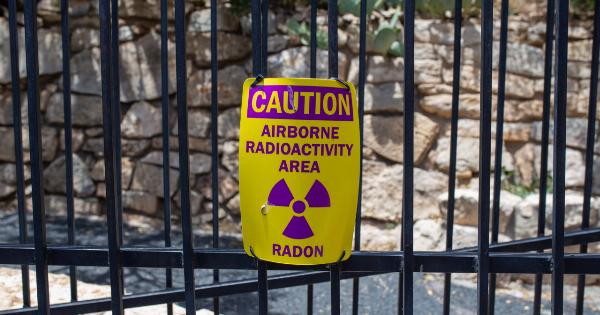A myocardial infarction, commonly known as a heart attack, can be a life-threatening event. Surviving a heart attack is a great achievement, but the road to complete recovery can be challenging.
Identifying high-risk individuals after a heart attack is crucial to ensure appropriate measures are taken to prevent future complications and optimize their survival. In this article, we will explore the factors that contribute to a high-risk category after an infarction, the tools used to identify individuals at risk, and the strategies to improve their chances of survival.
What is a Heart Attack?
A heart attack occurs when the blood flow to a section of the heart muscle is blocked, usually due to a blood clot forming in one of the coronary arteries.
This blockage prevents oxygen-rich blood from reaching the heart, causing damage or death to the heart muscle cells. The severity of a heart attack can vary, and the extent of damage depends on the duration of the blockage and the amount of heart muscle affected.
Identifying High-Risk Individuals
Not everyone who experiences a heart attack is at the same risk of future complications. Several factors increase the risk of adverse events and mortality after a heart attack.
Identifying these high-risk individuals is essential to tailor their treatment and rehabilitation programs accordingly. Some of the key risk factors include:.
Age
Older individuals are at a higher risk of complications after a heart attack. The structural and functional changes that come with aging, along with the presence of other comorbid conditions, contribute to the increased vulnerability in older adults.
Severity of Initial Infarction
The extent and severity of the initial heart attack play a significant role in determining the risk of subsequent events.
A larger infarction involving a larger area of the heart muscle can lead to more profound damage and a higher risk of complications.
Presence of Comorbid Conditions
Individuals with existing comorbid conditions, such as diabetes, hypertension, and obesity, have a higher risk of adverse outcomes after a heart attack.
The presence of these conditions further burdens the cardiovascular system and hampers the recovery process.
Left Ventricular Dysfunction
Impaired pumping function of the left ventricle, known as left ventricular dysfunction, is associated with a poor prognosis after a heart attack.
This dysfunction can occur due to extensive damage to the heart muscle or the development of heart failure.
Identifying Tools and Strategies
Medical professionals utilize various tools to identify high-risk individuals after a heart attack. These tools aid in determining the prognosis and selecting appropriate interventions. Some commonly employed strategies include:.
Electrocardiography (ECG)
An ECG is a primary diagnostic tool used to assess the electrical activity of the heart. It helps identify any abnormalities or ischemic changes, providing valuable information regarding the severity and location of the heart attack.
Serial ECGs can monitor the progress and guide further management.
Echocardiography
Echocardiography uses ultrasound waves to visualize the heart’s structure and function.
It allows clinicians to assess the extent of damage to the heart muscle, identify any structural abnormalities, and evaluate the pumping capacity of the heart.
Cardiac Biomarkers
Cardiac biomarkers, such as troponin levels, are substances released into the bloodstream following heart muscle damage. Elevated levels indicate the presence of a heart attack.
Serial measurement of these biomarkers helps monitor the progress and guide the management of high-risk individuals.
Stress Testing
Stress testing involves monitoring the heart’s response to physical or pharmacological stress.
It helps evaluate the heart’s function under exertion, identifying potential ischemic areas or abnormalities in heart rate and blood pressure response.
Improving Survival Chances
Once high-risk individuals are identified, intervention strategies are implemented to improve their chances of survival and long-term outcomes. These strategies often include:.
Medication Optimization
Optimizing medication therapy is imperative to manage risk factors and ensure appropriate control of blood pressure, cholesterol levels, and diabetes.
Medications such as beta-blockers, ACE inhibitors, and statins are commonly prescribed to reduce the risk of future complications.
Lifestyle Modifications
Encouraging lifestyle modifications, such as regular exercise, healthy diet, smoking cessation, and stress management, is crucial in reducing the risk of recurrent events.
Rehabilitation programs help individuals incorporate these changes into their daily lives and provide guidance and support along the way.
Cardiac Rehabilitation
Cardiac rehabilitation programs are specifically designed to provide a comprehensive approach to post-infarction care.
These programs include supervised exercise training, education on heart-healthy habits, psychological support, and ongoing monitoring of risk factors to optimize recovery and prevent future events.
Regular Follow-up and Monitoring
High-risk individuals require regular follow-up appointments with their healthcare providers.
These visits allow for continuous monitoring of risk factors, adjustment of medication doses if needed, and addressing any concerns or potential complications promptly.
Conclusion
Surviving a heart attack is a significant accomplishment; however, individuals who have experienced an infarction are at a higher risk of subsequent complications.
Identifying high-risk individuals after a heart attack enables healthcare professionals to implement appropriate measures to improve their chances of survival and long-term well-being. Through the use of diagnostic tools and tailored interventions, the medical community aims to optimize recovery, reduce the risk of future events, and provide comprehensive care to those in need.





























